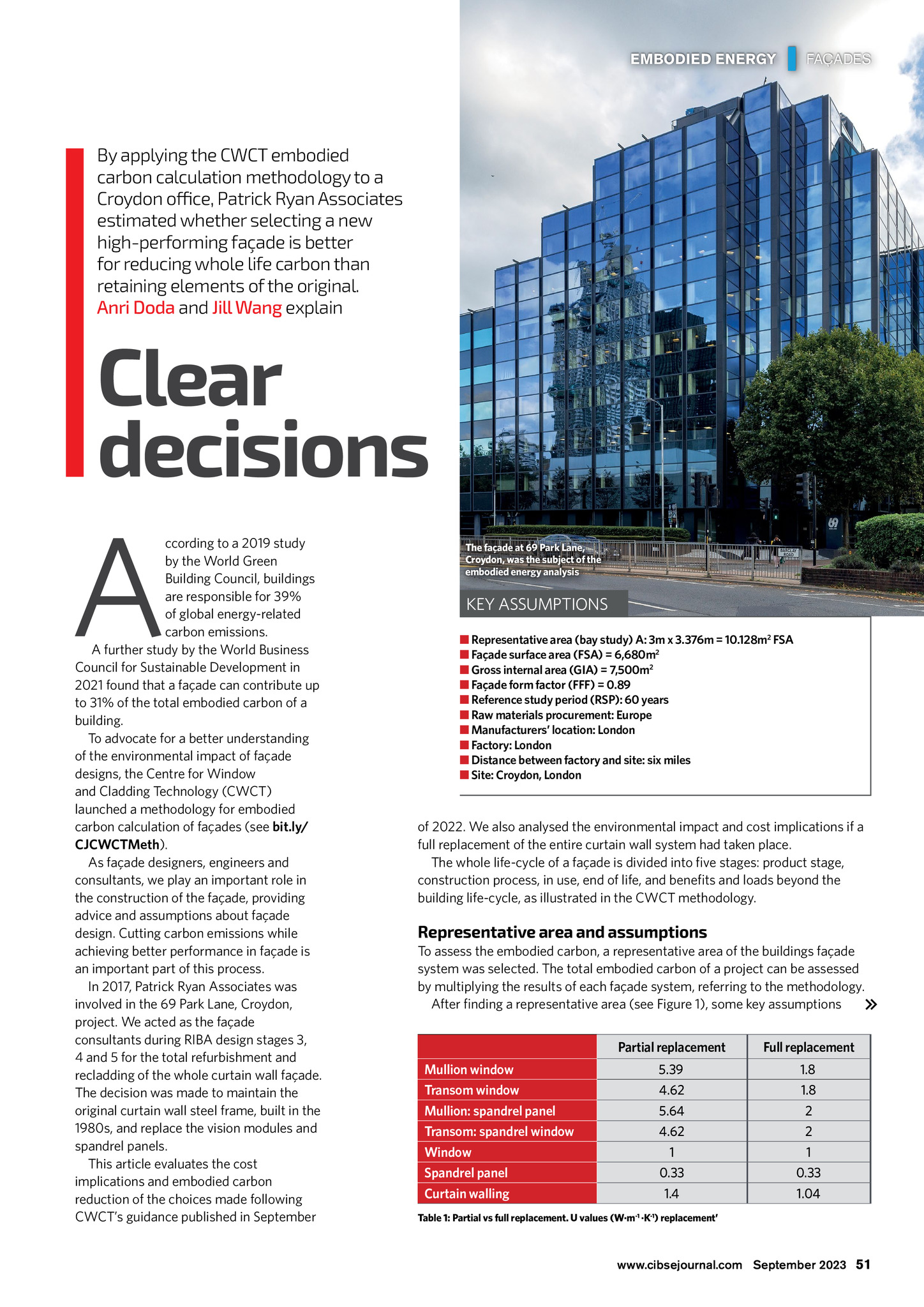


EMBODIED ENERGY | FAADES By applying the CWCT embodied carbon calculation methodology to a Croydon office, Patrick Ryan Associates estimated whether selecting a new high-performing faade is better for reducing whole life carbon than retaining elements of the original. Anri Doda and Jill Wang explain Clear decisions A ccording to a 2019 study by the World Green Building Council, buildings are responsible for 39% of global energy-related carbon emissions. A further study by the World Business Council for Sustainable Development in 2021 found that a faade can contribute up to 31% of the total embodied carbon of a building. To advocate for a better understanding of the environmental impact of faade designs, the Centre for Window and Cladding Technology (CWCT) launched a methodology for embodied carbon calculation of faades (see bit.ly/ CJCWCTMeth). As faade designers, engineers and consultants, we play an important role in the construction of the faade, providing advice and assumptions about faade design. Cutting carbon emissions while achieving better performance in faade is an important part of this process. In 2017, Patrick Ryan Associates was involved in the 69 Park Lane, Croydon, project. We acted as the faade consultants during RIBA design stages 3, 4 and 5 for the total refurbishment and recladding of the whole curtain wall faade. The decision was made to maintain the original curtain wall steel frame, built in the 1980s, and replace the vision modules and spandrel panels. This article evaluates the cost implications and embodied carbon reduction of the choices made following CWCTs guidance published in September The faade at 69 Park Lane, Croydon, was the subject of the embodied energy analysis KEY ASSUMPTIONS Representative area (bay study) A: 3m x 3.376m = 10.128m2 FSA Faade surface area (FSA) = 6,680m2 Gross internal area (GIA) = 7,500m2 Faade form factor (FFF) = 0.89 Reference study period (RSP): 60 years Raw materials procurement: Europe Manufacturers location: London Factory: London Distance between factory and site: six miles Site: Croydon, London of 2022. We also analysed the environmental impact and cost implications if a full replacement of the entire curtain wall system had taken place. The whole life-cycle of a faade is divided into five stages: product stage, construction process, in use, end of life, and benefits and loads beyond the building life-cycle, as illustrated in the CWCT methodology. Representative area and assumptions To assess the embodied carbon, a representative area of the buildings faade system was selected. The total embodied carbon of a project can be assessed by multiplying the results of each faade system, referring to the methodology. After finding a representative area (see Figure 1), some key assumptions Mullion window Transom window Mullion: spandrel panel Transom: spandrel window Window Spandrel panel Curtain walling Partial replacement Full replacement 5.39 4.62 5.64 4.62 1 0.33 1.4 1.8 1.8 2 2 1 0.33 1.04 Table 1: Partial vs full replacement. U values (Wm-1 K-1) replacement www.cibsejournal.com September 2023 51